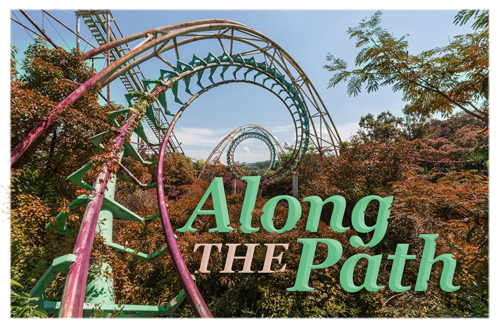Before It Floats... Hope Slides
- Laurie Jones-Canta

- Mar 8, 2022
- 4 min read
Updated: Mar 10, 2023
March 2022
We are months into a third year with continual rhetoric around pandemic health orders and all of its implications. Border restrictions prompting “truck convoy” to Ottawa addressing Federal government mandate & social injustice, has continued to divide society. News media reporting nationwide and global protests add to the unrest in the political and socio-economical arenas. To distract from ongoing depressing news, viewers join in Winter Olympic medal celebration for athletes in Beijing. Worldwide, one cannot avoid the ideology of this country where the Olympics are taking place. Add to unrest is the war-threatened day-to-day life for Ukraine. It’s a crazy world.

With an event more personal, closer to home, I had omitted mentioning that we had a harrowing experience travelling in the Fall, caught in the November 14th slides in Hope, BC . We had dry sunny weather in the Cariboo, while areas to the south a two week long deluge of rain amid high snow melt, was drenching the Fraser/Thompson River canyon and Fraser Valley regions. Early that day, we chose to delay behind a rock slide North of Yale in the tunnel region after turning around from Highway 8 at Spences Bridge hearing the Coquihalla also had a slide. Yes, we made it back through Spences Bridge, through Tank Hill and traversed Jackass Mountain before they were wiped out hours later! Radio reports suggested travellers take Highway 99, the only route remaining open. We decided to continue to Hope which was a junction we could reach closer to home. Someone was watching over us because out of routine we filled with gas at Cache Creek as we stopped for lunch… once through the hour long wait at Boston Bar we witnessed the roadside debris from the Yale tunnel rock slide thinking that was a relief and the coast was now clear… Driving through continual waterfalls pouring over the rock cliffs of the canyon was scary but we knew to keep moving. Approaching Hope, we turned off to continue east on Highway 7, as a mudslide blocked travel at Rosedale on Highway 1.
All vehicles stopped at Ruby Creek and adjacent to Camp Hope because of slides ahead. As we decided to turn around to go back to Hope we watched another rock and mud slide take down power poles and lines behind us. We were trapped at that point, hunkered down with our cooler of leftovers and travel bags with winter clothes from the cabin. Hundreds of trucks, vans, RVs, and cars were in line on the roadside. We moved away from precipices and watched the river level rising until it got too dark to continue to do so. We could run the truck to heat up and charge our phones but then Telus, Bell and Rogers reported towers down so signals were intermittent. Power went out in Hope and surrounding areas. We spent an uncomfortable night in the truck wrapped like Egyptian mummies in hoodies, sweaters and jackets. We could see flashing yellow lights from equipment trying to clear the slide East of us towards Hope.

At 11:00 am the next morning, a knock on our window produced our generous saviours, the Chawathill
First Nation who invited us to their gym where they had propane-generated power, coffee, snacks, meals, mats, blankets… even people’s pets were welcome. It was a relief to dry off and have the use of washroom facilities - crouching on the roadway for a day and a night was necessary but wet, cold and exposed. After a lunch, a dinner and friendly comfort on Monday, Nov 15th, the RCMP reported one lane would be open for an hour making Hope accessible. Some people decided to wait in the gym which became two more nights until they were helicoptered out. We would be able to drive one way and not return so we drove through the mud lane surrounded by debris piled on both sides and met friends in Hope at their friend’s private residence.
It would be Wednesday night, Nov 17th, before Highway 7 would open for a limited period between 5 and 9 pm to travel west toward town. Pilot car accompaniment was set up to get through Agassiz because of another slide and flooding there. We took the opportunity, it took until midnight before we could get to the safety and comfort in our own home.
Out of adversity and chaos came new friends, an appreciation for humanity, a firsthand experience of climate change, our commitment to the environment, a continuing respect for our local first nations, a necessary review of our travel emergency kit, a connection to the City of Hope, and finally a direct connection to the committee working on saving The Hope Station House. What a gift: and to follow, a relief carving to do. The experience prompted an added individual, and collective Dogwood Carvers Group, application to Hope & District Arts Council.
Photo courtesy: Danny M. Thompson




Comments